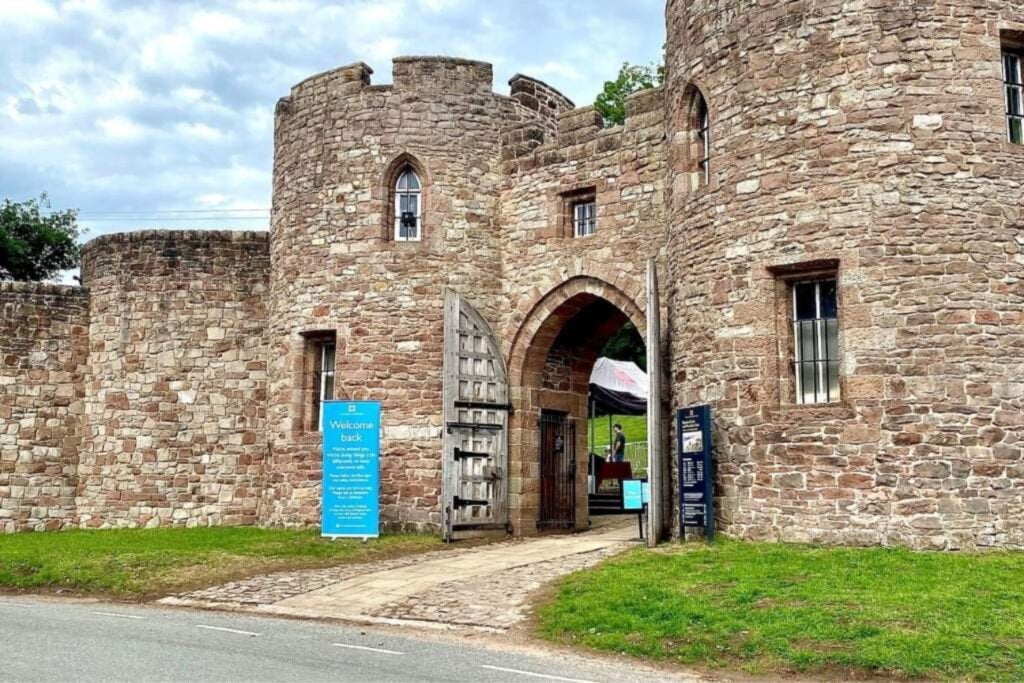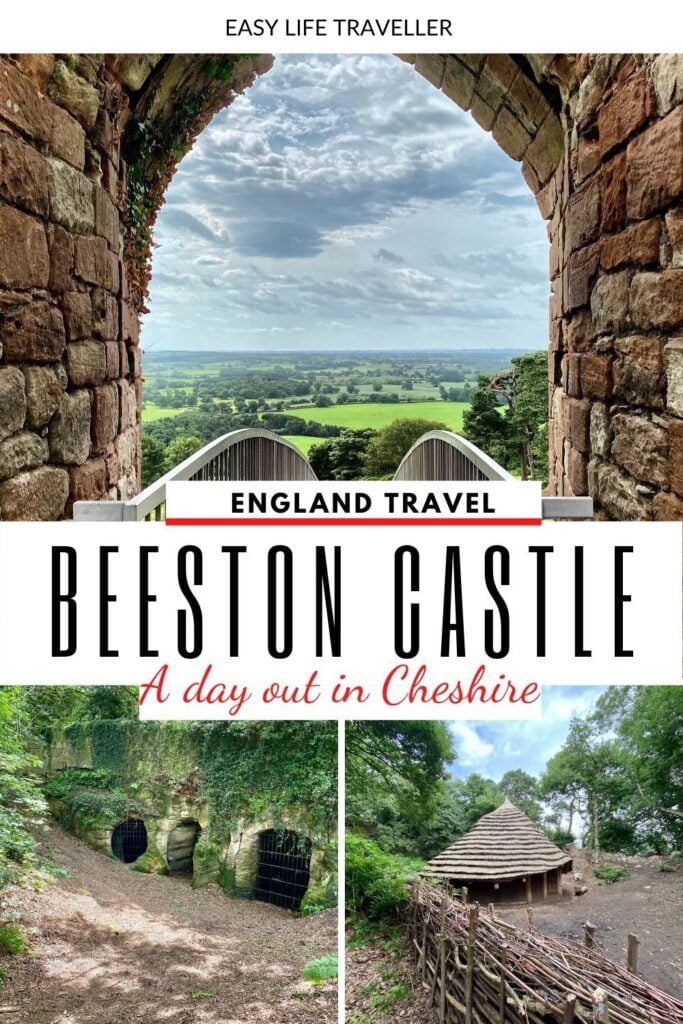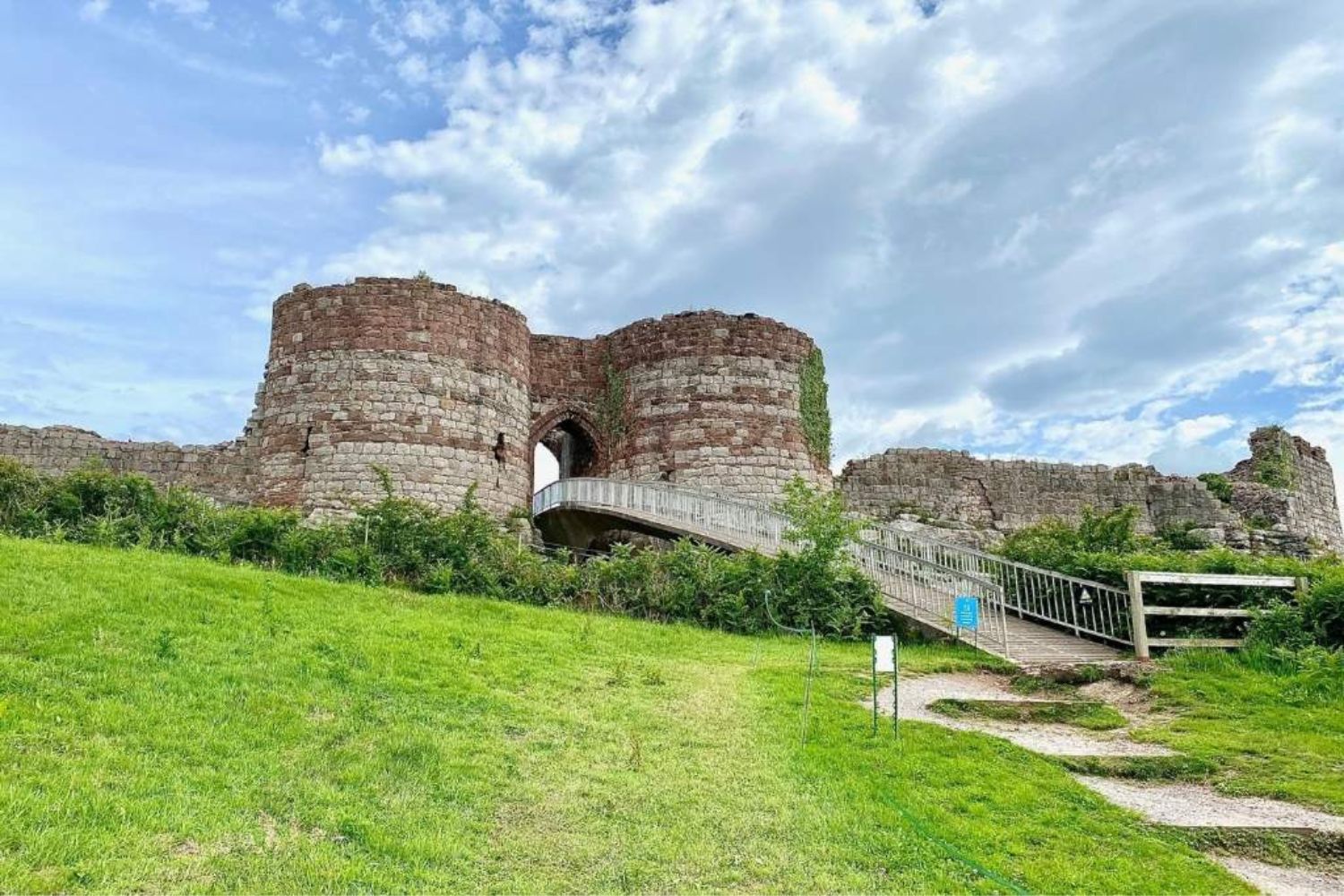Enjoy A Fabulous Day Out At Beeston Castle!
If you are looking for a day of adventure, beautiful views and exciting history, look no further than Beeston Castle in Cheshire! Nestled dramatically on the peak of a rocky cliff, it’s a wonderful place to view the fabulous landscape below, with views stretching out over 30 miles in all directions. Even if you aren’t a castle lover, the views on a clear day are worth the visit alone!
This post may contain affiliate links. That means that if you click on a link and purchase something I recommend, I will receive a small commission at no extra cost to you. As an Amazon Associate, I earn from qualifying purchases. This helps keep my website up and running and is very appreciated. Thank you for your support! You can read my full disclosure policy here.

History of Beeston Castle:
Although the castle dates back to the 13th Century, a fortification has existed on the cliff since early prehistoric times. During the Bronze Age, the crag was an important centre for metalworking, and many bronze objects have been found within the site, as well as much earlier Neolithic artefacts such as flint tools and pottery. There is also evidence that occupation continued through the Iron Age with remains of an Iron Age hill fort beneath the medieval defences.
Much of the castle as we know it today was built during the 1220s by Ranulf, the sixth earl of Chester. It is thought the inner and outer gatehouses and the tower to the east were built during this time.
Not too long later, in 1237, Henry III took over the castle’s ownership and granted Chester’s earldom to his son, the future king Edward I. During this time, Cheshire became part of the royal demesne, meaning the Crown retained the lands for themselves. Edward I came to Beeston in 1264 and used the castle to house prisoners from the battle of Evesham and a base before forcing the surrender of Chester.
During the 14th Century, much of the castle was remodelled with previous wooden structures rebuilt in stone. In addition, a new bridge was constructed 34ft high, 7ft thick and 20ft long. The remains can still be seen underneath the new modern bridge in place today.
In 1602, Beeston Castle was thought to be of no use to the English crown and was sold in part with the nearby Peckforton Estate to Sir Hugh Beeston.
Following the outbreak of the English Civil War in 1642, Beeston was seized by parliamentary forces led by Sir William Brereton in 1643. It held around 300 men and housed much of the area’s wealth for safety. The castle became the scene for many battles, and although breaches had been made, they managed to hold it. However, by November 1643, the royalists had received reinforcements from Ireland, and the garrison had been reduced to just 60 men.

Eventually, the commander, Captain Thomas Steele, had to surrender the castle. Although he managed to secure honourable terms for his men, it wasn’t the case for Steele, who was later tried and shot at Nantwich.
The royalists only managed to hold onto the castle for around a year; with the king’s defeat at the battle of Rowton Heath, 2 miles south of Chester, there was little point in further resistance, and the castle was surrendered on 15 November 1645. Chester surrendered on 3rd February 1646, and with it, the civil war in Cheshire was over. In the aftermath, orders were made for Beeston and other neighbouring castles to be demolished.
During the 17th Century, Beeston Castle became a tourist attraction; these cliff-top ruins inspired numerous artists. The 19th Century saw a more significant increase in popularity when access to the castle was greatly improved with the opening of the Chester to Crewe railway, including a station at Beeston.
In 1844, the first festival was held at the castle and organised to raise money for a ‘widows and orphans’ fund. This became an annual 2-day event; by the 1850’s, it was known as the Bunbury Fair. During this time, the current ticket office building and surrounding walls were built. In 1945, the current Beeston Fete was established, which continues to this day, held annually on the August bank holiday.
Visitor Information:
Prices:
Since 1984, English Heritage has owned and looked after Beeston Castle. The site is free for those with an English Heritage membership, which I recommend buying. Membership gives members free access to over 400 historic sites throughout England and only costs individuals £5.75 and couples £10 a month. You can even buy a family pass with either 1 or 2 adults for the same prices, with each adult able to include six children free.
You can also buy an overseas visitor pass for 9 or 16 days if you have travelled to the UK from overseas.
If you don’t have an English Heritage membership, entrance to the castle and grounds will cost adults £9.50 and children £5.50.
Getting to Beeston Castle:
By car: Located 11 miles SE of Chester, on a minor road off A49. Be careful driving through some of the local roads around the castle, as many are only one car wide. You will likely see the gatehouse entrance before the car park and may have to backtrack like me, as the car park is slightly hidden as you come around the bend.
Sat nav: Postcode : CW6 9TX Latitude : 53.126057 Longitude : -2.690318
Parking: Parking charges apply to non-members. Parking is free for members. The entrance is located 10 metres across the road from the site.
Public Transport: GHA service 83 (Tue) to Beeston; Otherwise, GHA service 56 (Thu & Sat) to Bunbury Heath (then 1-mile walk) or Arriva service 84 to Tarporley (2 1⁄2 miles)
Exploring Beeston Castle:

You enter the castle at the main gate across the road from the car park. Inside, you will find the ticket office and a small gift shop. Tickets don’t need to be printed; they can be scanned from any mobile device. If you’re an English Heritage member, you don’t need to purchase a ticket; you can show your membership card.
Once you enter the site, you can walk down the hill, check out the ancient caves, or trek up towards the castle. I would personally get the hard slog done first by walking up to the castle. Although it looks high, the climb up isn’t too difficult; it’s mostly grassy and includes some woodland trails. Just make sure you have sturdy shoes on, unlike me, who had platformed sandals on; how I never broke my ankle, I’ll never know!
As you can see from the pictures below, you climb to the left once you have walked through the woodland, following the old wall that once circled the castle. Be sure to look back a few times, as the views behind you are amazing. You will eventually be greeted with the fabulous sight of the castle. Although the castle looks intact outside, only the front wall still stands.

The hardest part of the climb is getting over the bridge! It looks steeper than you think. Getting back down is equally daunting, especially in platforms! However, once over and inside the castle, you can enjoy the most incredible views across the Cheshire plains. You can even spot nearby Peckforton Castle peaking through the trees on a clear day. Be sure to check out the well; it’s considered one of the longest wells in any English castle, believed to be at least 110 metres deep.



When you’re finished taking in the views from the top, you can go back down the hill and follow the trail until you reach the roundhouse. The Beeston Roundhouse is a reconstruction of a Bronze Age circular dwelling made of wooden or stone posts filled with mud and twigs.
When Archaeologists excavated parts of Beeston Castle in the 1970s and 1980s, they found post-holes dug into the bedrock that was thought to be the foundations for these prehistoric huts. They also discovered Bronze Age objects such as axes and knives. Based on this archaeological evidence, the team at Beeston reconstructed this prehistoric roundhouse at the site using traditional materials and techniques.
The inside of the roundhouse has been dressed appropriately for the era with various implements such as arrowheads, stone axes, pots of varying sizes, and faux animal hides. It offers an excellent opportunity to see what life was like during these ancient times.

Once finished at the roundhouse, it’s time to go back down the hill through more woodland trails before finding yourself back near the entrance. At this point, you can head across the field and find a small gap leading down towards the caves.
During the 19th century, these caves were known as the ‘Beresford’s Caves’ supposedly named after a resident who used to make a living from quarrying the sandstone. The stone was incredibly soft and used to make an early form of industrial sandblasting for cleaning the hulls of canal boats. Today, the entrance to the caves is forbidden for safety reasons and is now home to a colony of bats.

After your visit, cross over the road, and you will see a small cafe serving hot and cold drinks and a variety of snacks and delicious cakes. It’s a lovely place to chill and have a bite to eat and a cuppa. If you prefer to have a picnic, there are many places to sit around the castle grounds.
Read more: 30 fabulous things to see & do in Cheshire!
Final thoughts
Visiting Beeston Castle is a unique and wonderful experience. Though it may not be the most popular historical site in Cheshire, it offers a delightful glimpse into the past with its fascinating ruins. It also provides stunning views of the surrounding countryside, making it the perfect spot for an afternoon walk or picnic.
It’s one of those places that look much more impressive in person than any photograph could do justice to. So, if you are ever in Cheshire, consider adding Beeston Castle to your itinerary and embarking upon an adventure unlike any other. The castle’s magnetic beauty will stay with you long after your visit!









